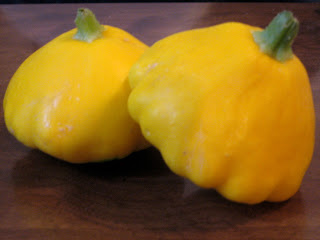My first time making risotto was years ago in a sweltering Italian kitchen. Not with an Italian grandmother passing down the tradition, mind you, but two American girls cooking from a recipe in Oprah's magazine, in a very un-airconditioned apartment, noses over a hot, gas-lit stove and steamy pans. So many things could have gone wrong: Oprah had measurements in the English system, our equipment measured in metric, the pots and pans were low quality, we had been warned that the gas stove (
bombola, what a scrumptiously descriptive word) was finicky and we couldn't adjust the temperature. But, miracle, the risotto was delicious, and two homesick American girls fell under the spell of risotto, and started smiling.
I went back to America and made risotto, thinking of my summer. I picked different vegetables as the seasons changed, and tried different seasonings, tweaking the proportion of rice to liquid, adding more parmesan and less butter.
The next time I was in Italy, I had a cohort of helper-cooks: some who knew how to make things, some who didn't. We cooked together, and as major-general of my tiny army, risotto was a staple: someone grated the cheese, another cut onions, someone else sauteed the vegetables, and yet another set the table and did dishes. Communal cooking gave us structure and family far from home, an instant happiness. Risotto was the reliable, requested, beloved dish, morphing through each dinner depending upon what was in the fridge, but eternally satisfying in its infinite variation.
And I came home in the fall, and missed my friends and cooking-army: risotto is so plentiful, expanding as it cooks, it's a dish that begs for multiple eaters. And then, a man I knew and had met for coffee came for dinner. And I made him risotto too. He's stayed for two years and a day, and dices the onions and zucchini just as I like them.
While the ingredients change, and new ones jump in to liven an old recipe, the essence of the dish remains an ever present reminder of friendship, community, and the sort of happiness that quietly settles over well-fed souls.
My recipe feeds four hungry people. Keep adding more rice and more chicken stock when more people come to visit, and keep the leftovers for lunch tomorrow.
Ingredients:
1 onion, diced
1 1/2 cups arborio rice
1/2 cup dry white wine, or juice of 1/2 a lemon
4-6 cups chicken stock
2 zucchini, diced
4 oz prosciutto, sliced
1 teaspoon and 2-3 tablespoons of butter
1 teaspoon olive oil
1/3 cup parmesan cheese, and more to sprinkle on top
salt
1. Heat up the chicken stock gently, not letting the liquid ever quite reach a boil
2. In a separate wide, flat pan, melt 1 teaspoon of butter and olive oil over medium-low heat. Once the butter bubbles lightly, add the onions, and cook for 8-10 minutes, until the onions are translucent.
3. Add the risotto and toast lightly for 1-2 minutes.
4. The first drink the thirsty rice gets is the white wine (or lemon juice, if you have no wine at hand). Pour it in and let the rice soak it up.
5. Next comes the heated chicken stock. Add about 1/2 a cup at a time, and watch the liquid slowly inflate the grains of rice. Stir occasionally so that the rice doesn't stick or scorch.
6. As the stock is being absorbed, cut up the zucchini and lightly saute in another pan with a little butter and salt. This is also the optimal time to cut up the prosciutto in to thin ribbons. Dare you not to sample as you slice.
7. After about 25-30 minutes of the adding-waiting-stirring, the consistency of the rice softens, and the liquid becomes thicker, binding the grains of rice together. Test a grain of rice with your fingernail: if it gives way easily, the rice is done, but if not, add more stock and keep cooking.
8. Once the rice achieves the right consistency, turn off the heat. Add butter and parmesan, stirring it in well. Add the zucchini and prosciutto, and salt to taste.
9. Eat with friends. You'll all be happy.



































